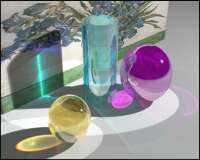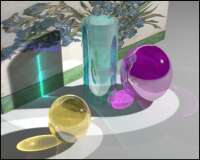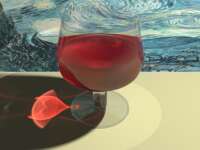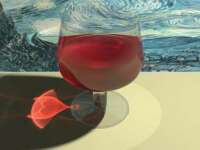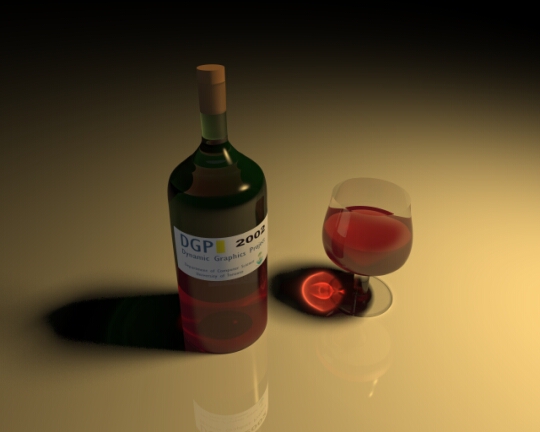|
Inverse Rendering of Refractive Media |
This page shows my latest (and the best) results that
I have obtained regarding inverse caustics.
I propose here a new technique to compute the parameters of a refractive
medium, knowing the 3D geometrical model of the scene, the camera properties,
the positions and intensities of the light sources and a single image of
the real scene. Right now, this technique has only be tested on computed
graphics images.
If you want know some details about the technique that I have developed,
please email me.
The first "inversed caustic" (left: original image, right: reconstructed):
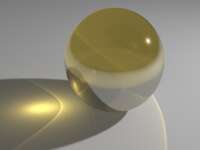
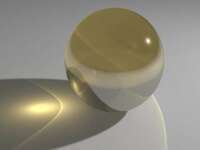
An image that really was a nightmare to inverse (watch the combination of caustics on the painting: the blue caustic is a combination of the violet object and the green/blue one; for now no chromatic dispersion for inverse rendering):
One of my favourite reconstruction and it is much tougher than it looks (the texture for the previous and the following original images are known in advance):
When I was tired about inversing the scene, I was augmented
it ! Look at the following image (reconstructed media in a new environment):
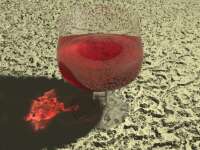
One of the thing that you can do if you get bored reading this webpage is asking me for a Toronto famous bottle of wine "DGP Cuvee 2002" and just drink it ! One day, maybe, I will inverse it (I better do that soon because it is not even half full now...)
Some animations that I have computed and that were very
useful to understand the refraction phenomenum...
The first animation shows a simple sphere with a refractive index moving
from 1.0 to 3.99 (step:0.005).
Sphere.avi.zip
The second animation shows a glass containing a liquid with a refractive
index varying from 1.0 to 3.99 (step:0.005). Note that for two very different
refractive indices (liquid), the part refracted throught the glass and the
liquid look sometimes the same but always produces very different caustics.
Caustic_liq.avi.zip
The third animation animation shows a glass with a refractive index varying
from 1.0 to 2.9 (step:0.05). For evey index, the refractive index of the
liquid varies from 1.0 to 3.99 (step:0.05).
Caustic2.avi.zip
